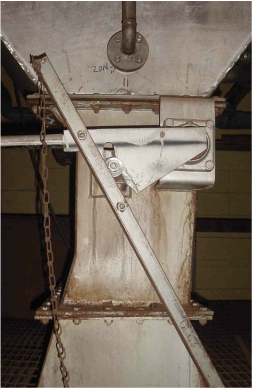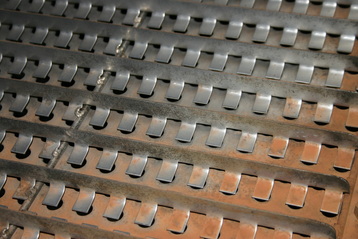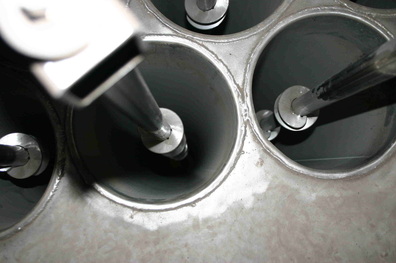Wet Scrubbers
|
A variety of wet scrubbers are used on incineration systems to
remove ash particulate and gaseous pollutants.
Wet scrubbers provide contact between the polluted flue gas stream and a
scrubbing liquid. CBE has extensive experience in troubleshooting the following
wet scrubber designs:
|
Venturi Scrubber
|
Venturi scrubbers use energy from the inlet flue gas stream to remove particulate when turbulently mixed with atomized scrubbing liquid. Water is introduced along the walls of a converging section before entering a narrow throat section which causes the gas stream to accelerate. The high velocity causes the scrubbing water to split into a mist of droplets that mix with the flue gas stream in the turbulent conditions to collect and remove the particulate from the flue gas. During this process the flue gas is cooled and saturated with water vapor.
Chavond-Barry Engineering Corp. has worked with numerous clients to design venturi repairs due to the effects of abrasion from the high gas velocities. CBE is also well versed in process optimization by changing the pressure drop of the venturi system. |
Tray Tower Scrubber
|
Tray tower scrubbers, typically found following a venturi
scrubber, offer air pollution control by use of multiple perforated trays with
impingement targets. The tray design
provides counter-current flow of the flooded scrubbing liquid flowing across and
down the column while the flue gas passes upwards through the perforations. The resulting gas-liquid contact allows for
collection of particulate matter and condensed water vapor.
CBE is knowledgeable in these tray scrubber designs and have implemented studies to improve overall scrubbing efficiency for our clients. |
Wet Electrostatic Precipitator (WESP)
|
Following a tray tower scrubber, incineration flue gases are directed through a wet electrostatic precipitator (WESP). A WESP is an industrial gas cleaning system intended to remove particulate emissions for exhaust gas streams. It provides an induced electrostatic charge on the gas particulate causing them to attract to the collection tubes which can be washed off with water sprays while the cleaned gas is exhausted to the atmosphere.
|



